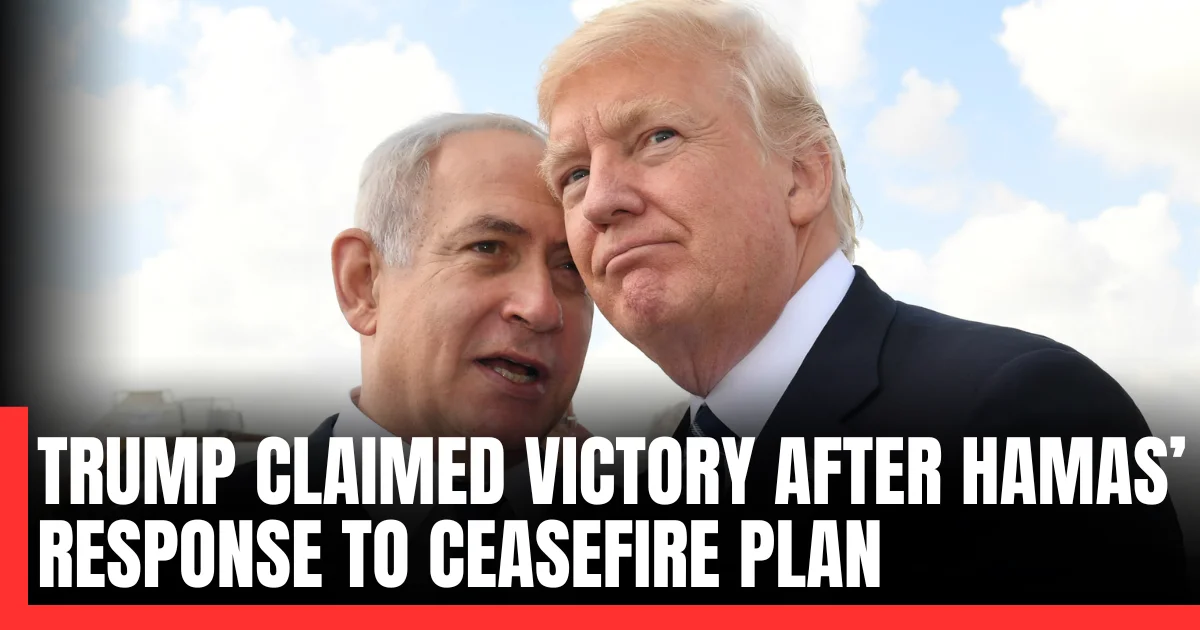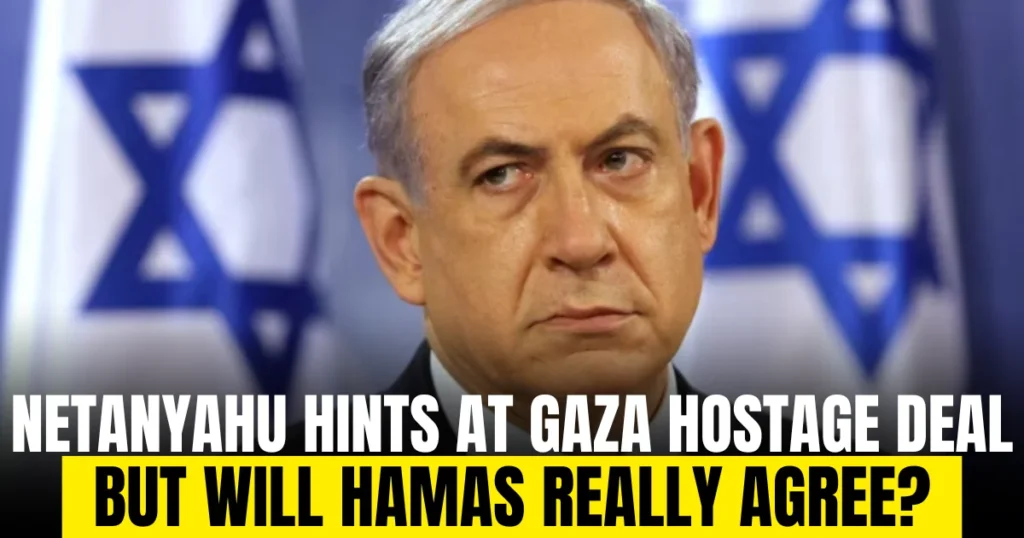Trump hailed Hamas’ response to his 20-point Gaza ceasefire plan, pressuring Netanyahu and moving closer to hostage release despite remaining uncertainties.
Table of Contents
Trump Claims Victory After Hamas Responds to Gaza Ceasefire Plan
President Donald Trump celebrated what he termed a major breakthrough after Hamas responded to his 20-point proposal aimed at ending the war in Gaza. While Hamas’ reply stopped short of fully endorsing key aspects, including disarmament and relinquishing governance over Gaza, Trump focused on the positive — the group’s readiness to release hostages held since the October 7, 2023 attacks.
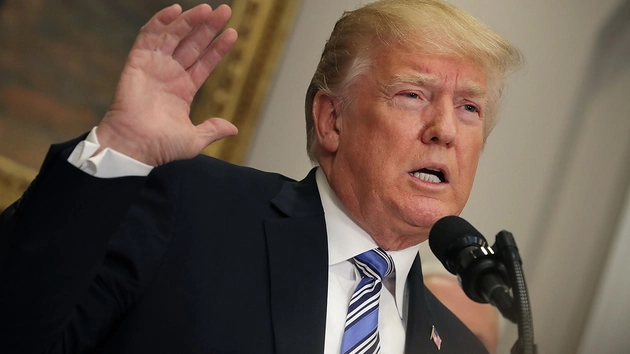
Within an hour of the six-paragraph response, Trump posted on Truth Social:
Trump highlighted that Hamas’ response signaled a willingness to move toward peace and called on Israel to pause its military operations to facilitate the safe release of hostages.
The White House’s rapid social media post mistakenly attributed the Hamas statement to Trump himself at one point, reflecting the administration’s eagerness to embrace the perceived breakthrough.
Netanyahu’s Position Amid Trump’s Pressure
Israeli Prime Minister Benjamin Netanyahu responded cautiously. In a statement early Saturday, his office confirmed that Israel is preparing to implement the first phase of Trump’s plan, aimed at securing the immediate release of hostages.
“We will continue to work in full cooperation with the president and his team to end the war in accordance with the principles set forth by Israel that are consistent with President Trump’s vision,” Netanyahu’s office added.
Trump’s declaration publicly pushed Israel to halt its assault on Gaza City, leaving Netanyahu in a delicate position. According to Israeli sources, Trump’s public pressure surprised Netanyahu and his team, forcing rapid adjustments to military operations.
Trump’s Diplomacy and Regional Support
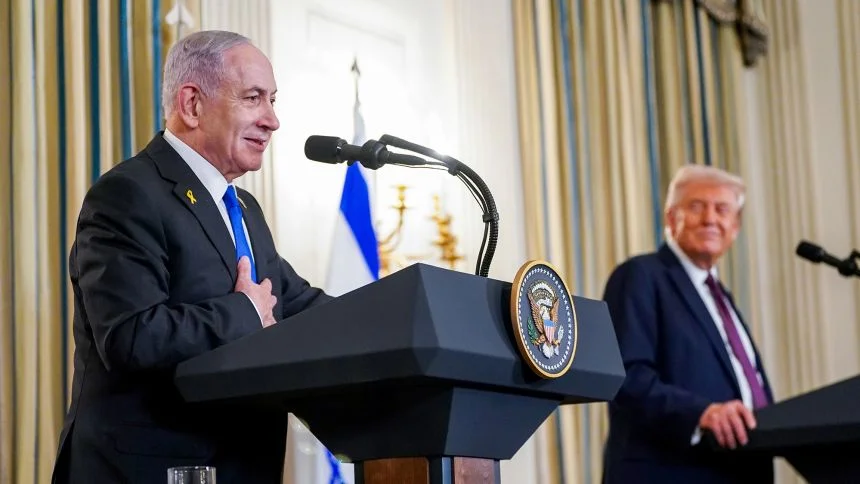
While coordinating with Israel remained unclear, Trump publicly acknowledged Qatar, Turkey, Saudi Arabia, Egypt, and Jordan for their mediation efforts, without mentioning Netanyahu.
Trump’s special envoy Steve Witkoff, along with Jared Kushner, are scheduled to travel to Egypt to finalize negotiations on hostage release and additional ceasefire details. Following preliminary talks, Trump announced an “initial withdrawal line”, with the next phase of negotiations expected to bring the conflict closer to resolution.
Mixed Reactions and Challenges Ahead
Despite Trump’s optimism, some allies remained skeptical. Senator Lindsey Graham criticized Hamas’ response as a “classic ‘Yes, but’,” highlighting the lack of disarmament and the conditional nature of hostage release.
Trump, however, emphasized the opportunity to advance peace, stating:
Trump emphasized that while progress has been made, the final details of the ceasefire plan still need to be confirmed and formalized.
Internal communications and regional diplomacy had been slow. US officials cited communication issues with Hamas military leaders and internal divisions over aspects of Trump’s proposal as factors delaying the response.
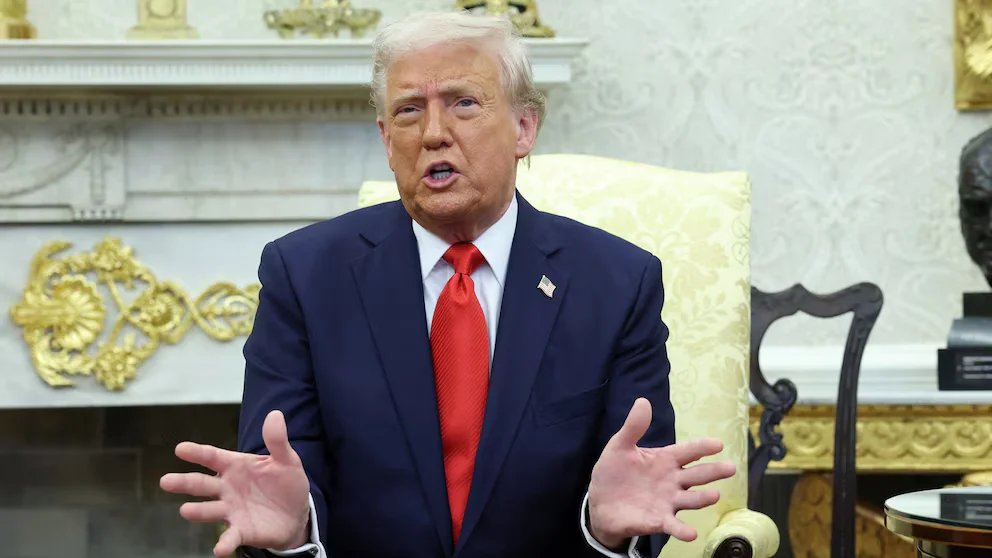
Trump Puts Netanyahu on the Spot
Trump’s celebratory tone effectively boxed in Netanyahu, compelling Israel to either publicly accept Hamas’ response or risk straining its relationship with the US. Analysts note this maneuver highlights Trump’s increasing assertiveness in Middle East diplomacy since reentering office.
Israeli strikes on Hamas leaders in Qatar last month, which Trump and US officials viewed as destabilizing, also intensified his drive for a negotiated ceasefire. His team emphasized that Netanyahu’s buy-in was critical, though not without adjustments to the plan’s wording to appease both Israeli and Arab stakeholders.
❓ FAQs About Trump’s Gaza Ceasefire Plan
Q1: What did Hamas agree to in Trump’s ceasefire proposal?
A: Hamas indicated readiness to release hostages but did not fully agree to disarm or relinquish governance over Gaza.
Q2: How did Trump respond to Hamas’ partial agreement?
A: Trump focused on the positive aspects, declaring a potential lasting peace and calling for an immediate halt to Israeli bombings.
Q3: What role is Netanyahu playing in the negotiations?
A: Netanyahu has agreed to implement the first phase of the ceasefire plan but faces public pressure from Trump to halt military actions.
Q4: Which countries are mediating the ceasefire?
A: Qatar, Turkey, Saudi Arabia, Egypt, and Jordan are actively assisting in negotiations.
Q5: What are the next steps for the peace plan?
A: US envoys will finalize details in Egypt, confirm hostage release, and establish conditions for phased Israeli withdrawal.
Conclusion: A Delicate Moment in Middle East Diplomacy
President Trump’s handling of Hamas’ response to his 20-point plan underscores the complex interplay of diplomacy, pressure, and public messaging. While optimism is high, many challenges remain: partial agreement, Israel’s military strategy, and the ongoing negotiation of a lasting ceasefire.
🕊️ As negotiations continue, all eyes remain on the White House, Netanyahu, and regional mediators to see if peace can finally take hold in Gaza.
